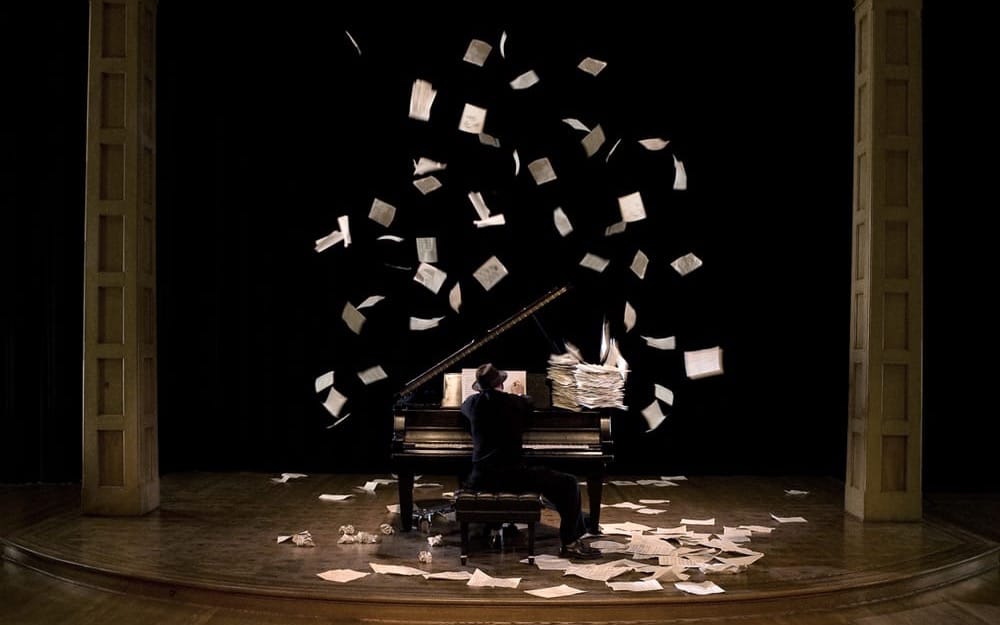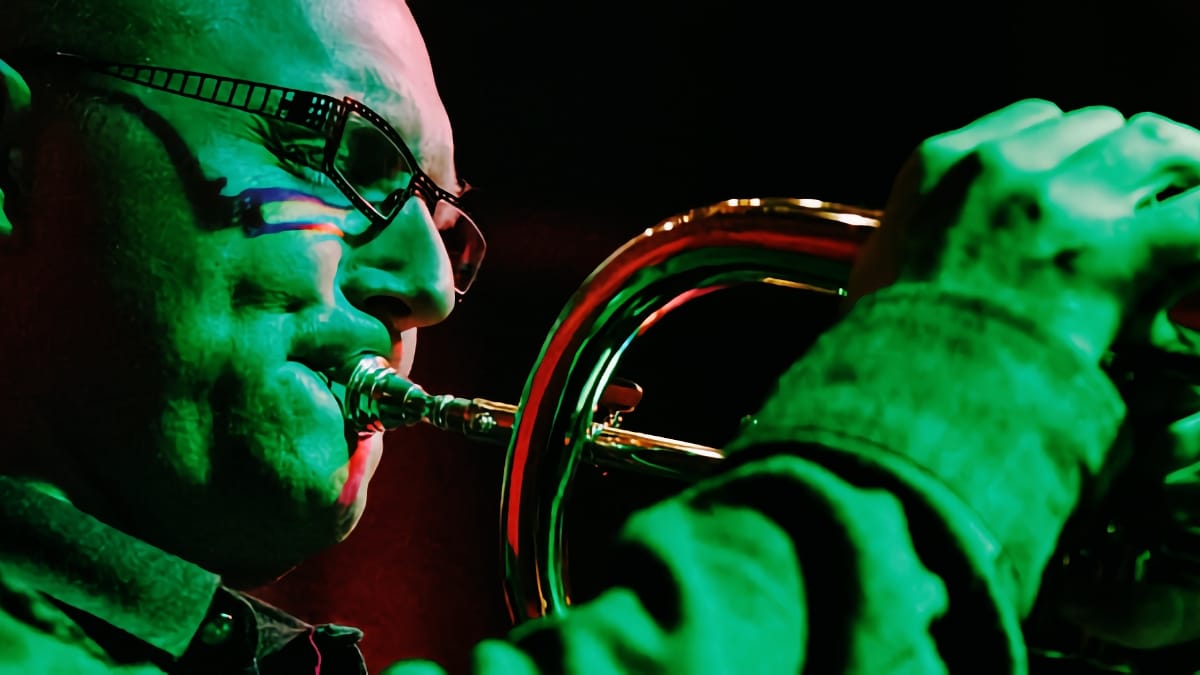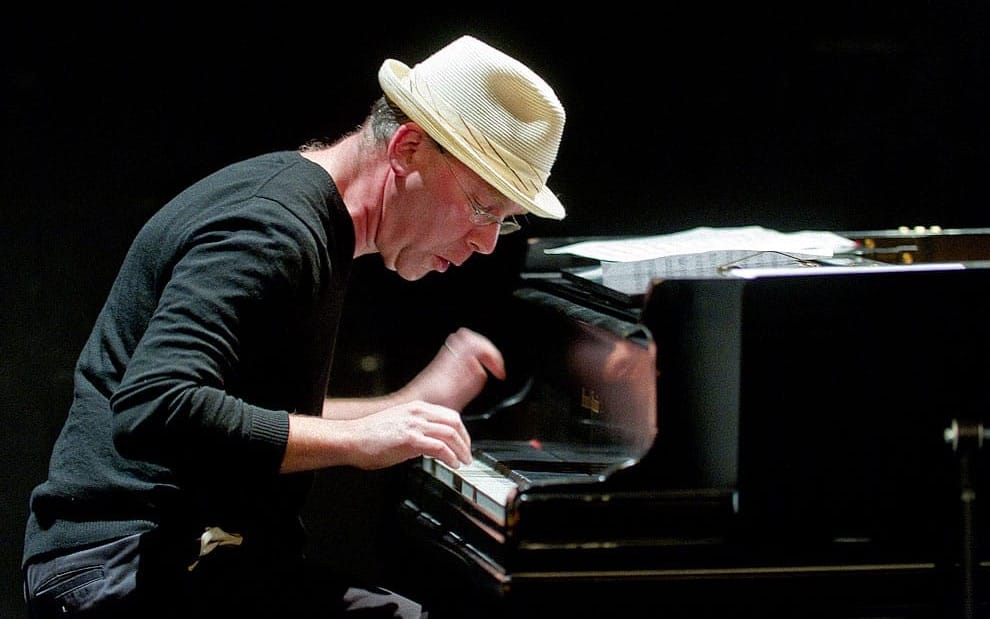Wayne Horvitz has never been easy to pigeonhole. For over four decades, the Seattle-based composer and musician has been mixing genres, pushing boundaries, and challenging assumptions about what music should be. His work offers a glimpse into the evolution of musical creation, where the lines between composition and improvisation, classical and jazz, acoustic and electronic, are increasingly blurred. This modern aesthetic extends into popular forms, as Horvitz explained in our discussion excerpted below.

"I don't think the line between improvised and written music is all that great," Horvitz says. "It's all just one essential arc." This idea flies in the face of traditional Western classical music, where composers write, performers play, and never the twain shall meet. For Horvitz, it's all part of the same creative process.
Horvitz did not pull this fast-and-loose approach out of thin air. It is baked into jazz and other Black American music traditions. For example, Horvitz points to Cecil Taylor's idea of a "logic that lived within the body and the relationship of the body to the instrument." It's a kind of physical intelligence that goes beyond just playing the notes on the page—and Horvitz sees this bodily wisdom at work, even in classical music. "Classical players are improvising to some extent all the time," he argues. "The way that they experience time is the same thing. What just happened and what's going to happen is as important if you're playing Bach as it is [in improvised music]."
Genre-mixing—or what Bill Laswell calls "collision music"—is a hallmark of Horvitz's work. Take his band Zony Mash, which started in 1995 and threw jazz improv into a blender with funk grooves and rock energy.
He's particularly struck by how hip-hop has revolutionized music. "Hip hop broke apart the idea of what a song is," he says, and goes on to explain how hip-hop's approach to structure and sampling has influenced his on-stage compositional work with Electric Circus, an ensemble he leads that remixes classic soul and various eras of rock music by performing sampled grooves from familiar songs: "In Electric Circus, I take little motifs from James Brown or Sly and the Family Stone or Los Lobos or The Clash." He then uses these samples as the basis for new pieces, much like a hip-hop producer might construct a track.
While hip-hop's cut-and-paste aesthetic has left its mark on Horvitz, he's equally enthusiastic about another tool for musical spontaneity: conduction, a technique developed by his late friend Butch Morris, for use in real-time composition with an ensemble. Horvitz describes his mindset: "I like to compose with a computer. I like to compose at the piano. I like to compose writing for real instruments. I like to use conduction to compose. It's all composing to me."
The conduction technique has also found its way into Horvitz's work with other ensembles. In his collaborations with the Seattle Modern Orchestra, Horvitz has again used conduction to recreate the effect of sampling and looping with live musicians. He might, for instance, have a string section repeat a short phrase from a classical piece, creating a 'live loop' over which other musicians improvise.
Elaborating on how "remixing" ideas have spread in jazz and classical circles and are in dialogue with popular music, Horvitz references Morris, who was "really fascinated with sampling" and would instruct musicians to use loop pedals in his conducted improvisations. In the classical world, Horvitz notes composers like Steve Reich, whose minimalist works often use repetitive patterns reminiscent of later hip-hop loops. At the same time, ambient and electronic dance music auteurs like The Orb, DJ Spooky, and others lift techniques from Reich.
Reinterpreting existing music is another key part of Horvitz's approach. Lately, he's been working on conduction arrangements for Sun Ra's music, and he's struck by how many different versions of each piece Sun Ra recorded. This has inspired Horvitz in his work. For example, he composed "Those Who Remain" for orchestra, then later reworked it into an electronic score for a multimedia installation.
From his early days in New York's Downtown scene, jamming with saxophone wildman John Zorn, to his long-running musical dialogue with guitar wizard Bill Frisell, Horvitz thrives on creative friction. These days, he's pushing classically trained musicians like the Seattle Modern Orchestra into uncharted waters, getting them to dip their toes into improvisation and conduction. For Horvitz, each new collaboration is a chance to upend his musical assumptions. "I'm constantly meeting new people," he says. "It's almost oppressive how often I meet somebody and go, 'God, I want to do something with them!'"
Ask Horvitz about his music, and he'll likely talk less about his expression and more about his collaborators, influences, and whatever fresh idea he's chasing now. For him, music isn't some solitary pursuit—it's a rowdy, ongoing dialogue with sounds past, present, and yet to come.
Wayne Horvitz is currently presenting the multi-part series, "What's Going On: Conduction, Improvisation, and the Culture of Structure," as part of this year's Earshot Jazz Festival in Seattle, WA.
Check out more like this:
 The TonearmLawrence Peryer
The TonearmLawrence Peryer
 The TonearmLawrence Peryer
The TonearmLawrence Peryer







Comments